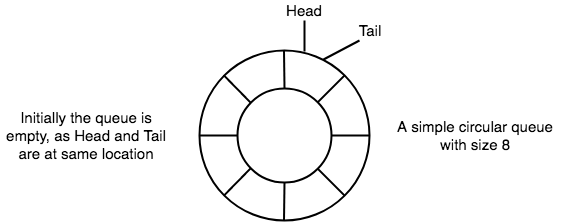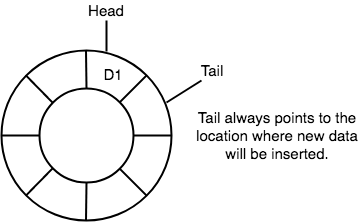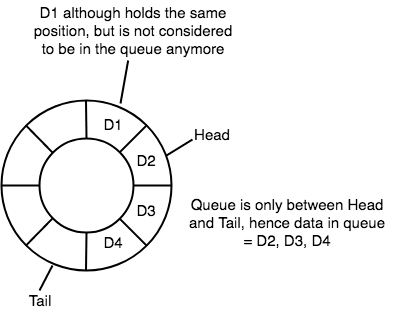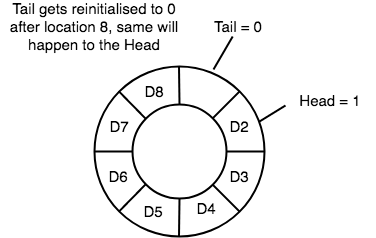-
Tutorials

PROGRAMMING
GAME DEVELOPMENT
- Tests
- Curious
- Practice Coding
- Become an Educator NEW
A Circular Queue is a queue data structure but circular in shape, therefore after the last position, the next place in the queue is the first position.
We recommend you to first go through the Linear Queue tutorial before Circular queue, as we will be extending the same implementation.
In case of Linear queue, we did not had the head and tail pointers because we used python List for implementing it. But in case of a circular queue, as the size of the queue is fixed, hence we will set a maxSize for our list used for queue implementation.
A few points to note here are:
head pointer will always point to the front of the queue, and tail pointer will always point to the end of the queue.head and the tail pointers will be pointing to the same location, this would mean that the queue is empty.

tail pointer, and once the data is added, tail pointer is incremented to point to the next available location.

head pointer is incremented by one position when dequeue is executed. As the queue data is only the data between head and tail, hence the data left outside is not a part of the queue anymore, hence removed.

head and the tail pointer will get reinitialised to 0 every time they reach the end of the queue.

head and the tail pointers can cross each other. In other words, head pointer can be greater than the tail. Sounds odd? This will happen when we dequeue the queue a couple of times and the tail pointer gets reinitialised upon reaching the end of the queue.

tail and the head pointer within the maximum queue size. In the diagrams above the queue has a size of 8, hence, the value of tail and head pointers will always be between 0 and 7. This can be controlled either by checking everytime whether tail or head have reached the maxSize and then setting the value 0 or, we have a better way, which is, for a value x if we divide it by 8, the remained will never be greater than 8, it will always be between 0 and 7, which is exactly what we want.If you want to see a Queue operating in realtime, checkout this animation.
maxSize), and head and tail pointers.enqueue: Check if the number of elements is equal to maxSize - 1:
tail pointer and increment the tail pointer.dequeue: Check if the number of elements in the queue is zero:
head pointer.size:
tail >= head, size = tail - headhead > tail, then size = maxSize - (head - tail)Too much information, give it some time to sink in.
We will be using Python List for implementing the circular queue data structure.
Try changing the code as you like. Click the button, to Run the code again.
/code/python/ds/circular-queue-in-python.php